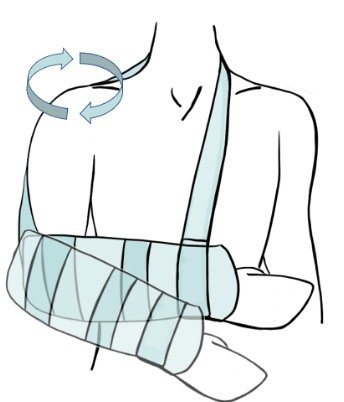Wrist Fracture Rehab
Home > Condition & Treatment Map > Hand & Wrist Conditions & Treatments > Wrist Fractures
Overview
Fractures of the wrist are very common. Some fractures can be managed in a cast but most serious fractures of the wrist (distal radius) require surgery.
Movement following Surgery or removal of cast
Trauma surgeons at Victorian Bone and Joint Specialists will assess your fracture for a suitable time to begin movement. Often early movement is best and a hand therapist may be recommended to you.
Typical the fractured wrist will spend an amount of time in a cast before transition to a removable wrist splint.
When instructed the following movements are recommended.
STAGE 1 (0-2 weeks)
Pendular type exercises can be started in the first 2 weeks after surgery: You can move your shoulder, elbow and fingers if it is comfortable to do so.
In the first two weeks after surgery you will need to look after the plaster and not get it wet.
STAGE 2 (2 - 6 weeks)
You can take your wrist out of your splint to shower and begin to move the wrist gentle. The wrist may feel slightly uncomfortable when you begin to move it. This is normal. You can continue to perform he exercise described so long as there is no pain.
This is called the prayer movement and helps to bend the wrist back. You will not be able to get the wrist all the way back for a number of weeks.
Complete 5 repetitions, 10 times per day
This is called the reverse prayer movement and helps to flex the wrist forward. You will not be able to get the wrist all the way forward for a number of weeks.
Complete 5 repetitions, 10 times per day
This movements requires you to lock the elbows in close to your side and move the palm up and palm down. This helps the forearm and wrist to rotate.
Complete 5 repetitions, 10 times per day
STAGE 3 (6 - 12 weeks)
If you need further rehabilitation a hand therapist or physiotherapist can help with further movement.




